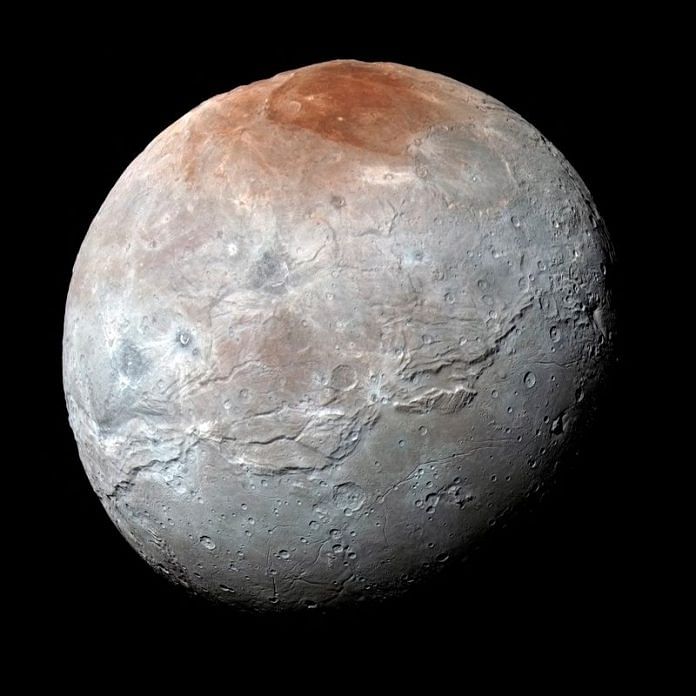By Will Dunham
WASHINGTON (Reuters) – Observations by the James Webb Space Telescope are giving scientists a fuller understanding about the composition and evolution of Pluto’s moon Charon, the largest moon orbiting any of our solar system’s dwarf planets.
Webb for the first time detected carbon dioxide and hydrogen peroxide – both frozen as solids – on the surface of Charon, a spherical body about 750 miles (1,200 km) in diameter, researchers said on Tuesday. Those are added to the water ice, ammonia-bearing compounds and organic materials previously documented on Charon’s surface.
Charon, discovered in 1978, has the distinction of being the solar system’s largest moon relative in size to the planet it orbits. It is about half the diameter and an eighth the mass of Pluto, a dwarf planet that resides in a frigid region of the outer Solar System called the Kuiper Belt, beyond the most distant planet Neptune.
The distance between Charon and Pluto is about 12,200 miles (19,640 km), compared to the 238,855 miles (384,400 km) on average separating Earth from its moon.
Most of Charon’s surface is gray, with reddish-brown regions around its poles composed of organic materials.
The Webb observations build on data obtained when NASA’s New Horizons spacecraft flew by Charon during its visit to the Pluto system in 2015. The new study tapped into the ability of Webb, which was launched in 2021 and began collecting data the following year, to observe across a greater range of wavelengths than previously available.
The presence of hydrogen peroxide speaks to the irradiation processes Charon has experienced over time, the researchers said, while the carbon dioxide is probably an original component dating to this moon’s formation about 4.5 billion years ago.
The hydrogen peroxide, the researchers said, formed as the water ice on Charon’s surface was chemically altered by the perpetual onslaught of ultraviolet radiation from the sun as well as energetic particles from the solar wind and from galactic cosmic rays that traverse the universe.
The researchers said the carbon dioxide observed by Webb was probably buried underneath the surface and exposed by impacts on Charon. The carbon dioxide, they said, is likely to have been part of the primordial material from which both Charon and Pluto originally formed.
Scientists had been surprised that carbon dioxide was not previously spotted.
“The detection of carbon dioxide was a satisfying confirmation of our expectations,” said Silvia Protopapa, assistant director of the department of space studies at the Southwest Research Institute in Boulder, Colorado, co-investigator of the New Horizons mission and lead author of the study published in the journal Nature Communications.
“The detection of hydrogen peroxide on Charon was unexpected. I honestly did not anticipate finding evidence of it on the surface,” Protopapa added.
The new observations of Charon help tell a broader story about the celestial bodies populating our solar system.
“Every small body in the outer solar system is a unique piece of a larger puzzle that scientists are trying to put together,” Protopapa said.
The researchers used a Webb instrument called the Near-Infrared Spectrograph to make four observations in 2022 and 2023, getting full coverage of Charon’s northern hemisphere.
“These new Webb observations add carbon dioxide and hydrogen peroxide to the known inventory of (Charon’s) surface components. Both of these provide insights into ongoing processes of irradiation and impact-driven resurfacing,” said study co-author Ian Wong, staff scientist at the Space Telescope Science Institute in Baltimore.
(Reporting by Will Dunham, Editing by Rosalba O’Brien)
Disclaimer: This report is auto generated from the Reuters news service. ThePrint holds no responsibilty for its content.






